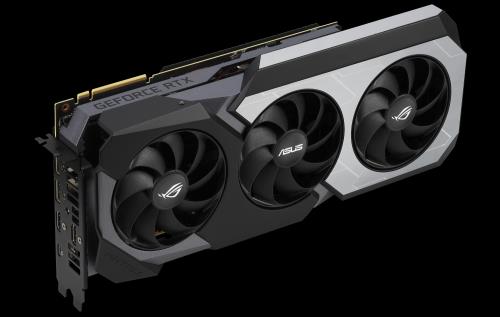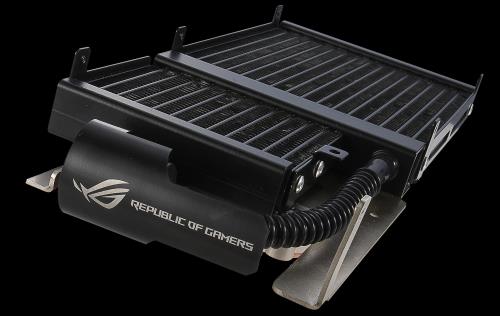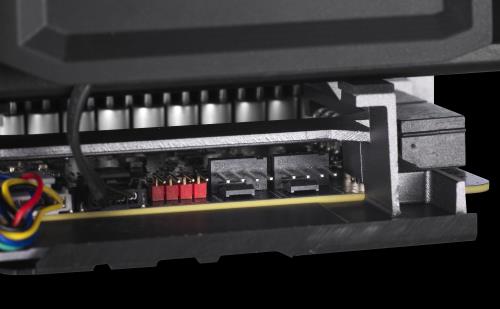The ROG Matrix RTX 2080 Ti fully integrates liquid GPU cooling
High-end graphics cards consume hundreds of watts, and their performance is bound by opportunistic clock scaling technologies that only ramp up to full speed when temperatures allow. Cooling is paramount, and liquid is easily the best method short of sub-zero rigs that aren’t practical for everyday use. There’s just one problem: whether you’re using custom plumbing or an all-in-one solution, the requisite hardware takes up an awful lot of room in your case.
Or at least it did. We’ve spent the last two years perfecting an innovative liquid cooler for GPUs that fits everything onto a triple-slot card that’s about the same size as leading air-cooled cards and just as easy to install. Making its debut at CES 2019 in Las Vegas, the new ROG Matrix GeForce RTX 2080 Ti takes Turing to the next level with fully integrated liquid cooling unlike anything else.
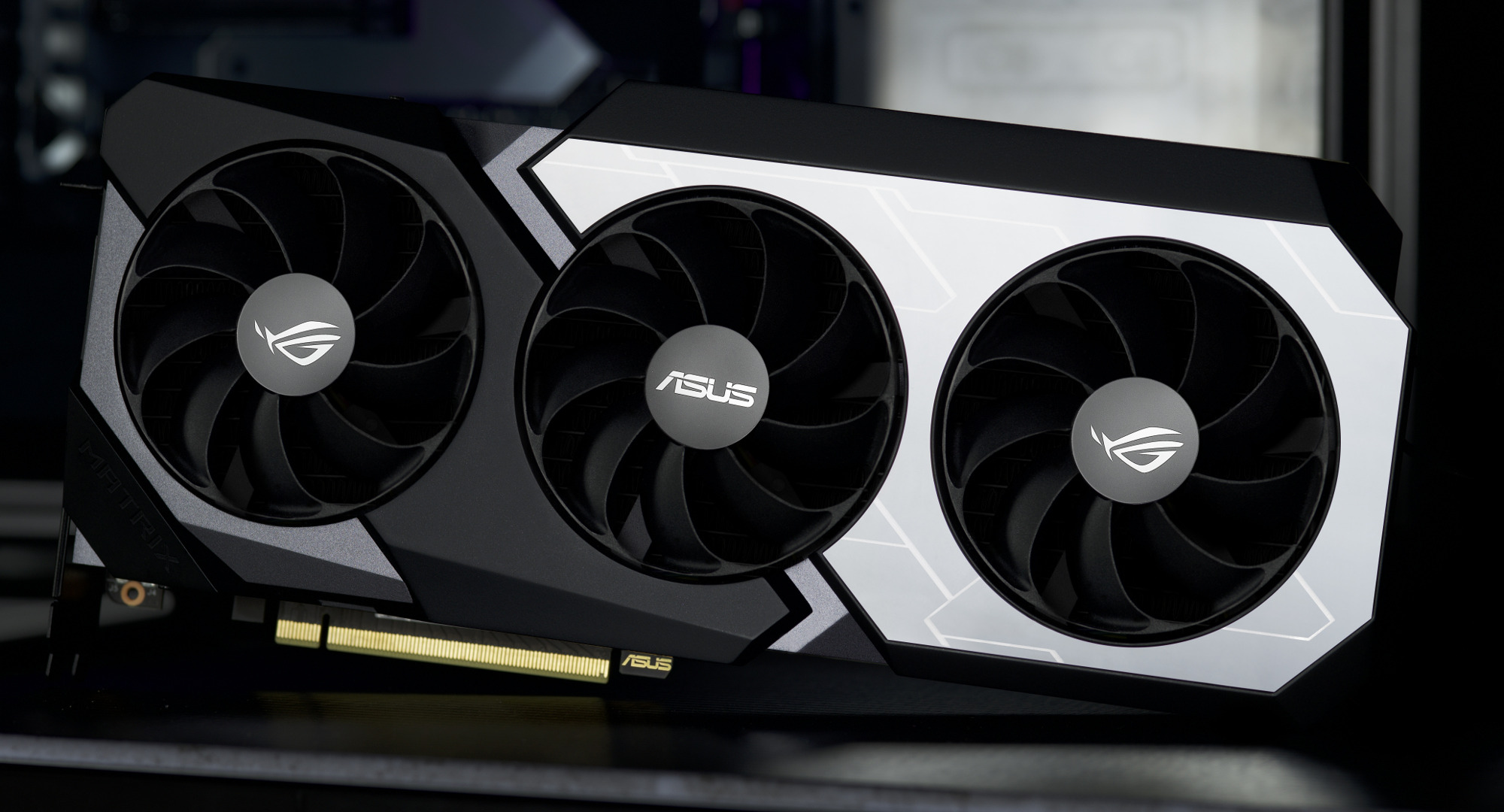
How to squeeze liquid GPU cooling into three slots
The Republic of Gamers has long catered to enthusiasts who create custom loops to circulate liquid to the GPU and other crucial components. Although it can produce jaw-dropping results, this approach requires a fair amount of work and expertise. All-in-one alternatives are much more accessible for gamers and other power users who want great cooling that’s ready to go right out of the box.
We initially experimented with an external 120-mm radiator and were pleased with the resulting temperature reduction. Unfortunately, the cooler was too big and unwieldy to squeeze into smaller systems, especially when paired with similar liquid cooling for the CPU. We turned our attention to putting everything on the card and developed a prototype that used a large skived heatsink pierced by coolant-filled copper pipes. The size was more manageable, but temperatures were 10°C higher, so we went back to the drawing board.
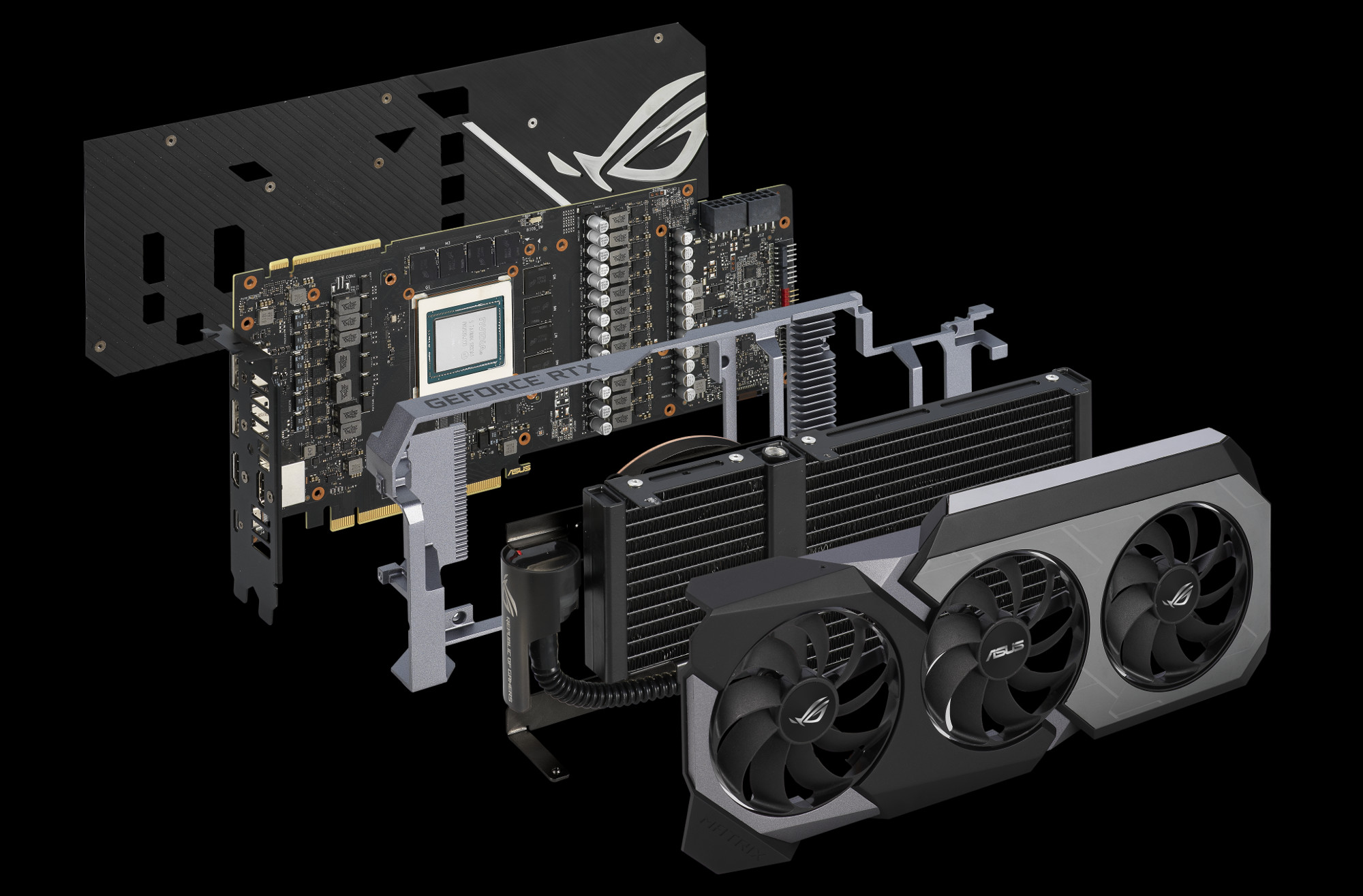
Our next prototype replaced the heatsink with an integrated radiator that brought temperatures back down. This four-slot beast was too big to be practical as a finished product, but the design showed promise, so we set about shaving its profile to meet a three-slot target. The biggest barrier was the pump. It started on top of the GPU block, like with most CPU coolers, but that made the card too thick, so we separated them and created a smaller custom pump that sits off to the side. This placement ensures that the pump performs well in a variety of systems and orientations with the exception of rare cases that mount cards vertically, with the I/O ports facing up. When the pump is at the top of the loop, bubbles can infiltrate the coolant and slowly degrade cooling performance over time.
During early testing, we learned that the latest GDDR6 memory runs reasonably hot, so we expanded the GPU block to cover it. The copper base is 2.5X larger than competing designs, and it’s filled with extra fins that offer 30% more surface area for the coolant to contact. Along with a substantial aluminum cover, all that extra metal helps cool not only the GPU, but also the memory.
The VRMs don’t need to be covered by the cold plate; they get enough airflow from the Axial-tech fans affixed to the radiator. These fans were first deployed on the ROG Strix GeForce RTX series, but their penchant for producing higher pressure is perfect for pushing air through the tightly packed radiator. Selecting the right radiator size is critically important. Going too thin compromises cooling capacity, but making it too thick can require even more air pressure for optimal cooling efficiency.
During the development of the Matrix, we worked closely with industry partners to create more than five prototypes with various iterations of the block, radiator, and pump. It took a lot of time and effort to create a liquid cooler small enough to fit into three slots without compromising cooling performance or noise levels. Our fully integrated design runs quieter than competing solutions based on external 120-mm radiators, and it nearly matches the cooling performance of much larger 240-mm radiators that take up even more room inside your chassis. We also ensured that the Matrix works in challenging thermal environments like cases with high ambient temperatures and SLI configurations with a second card sitting right alongside.
Only the best boards capable of reaching the highest clocks
Although its cooler is completely different, the Matrix RTX 2080 Ti uses the same custom circuit board as its Strix counterpart. Cards are manufactured with Auto-Extreme Technology, a fully automated production process that affixes components with robotic precision. Auto-Extreme uses a single soldering pass that reduces thermal stress, eliminates harsh chemicals, and reduces the total amount of power required to produce cards.
Each board is tested and sorted after the GPU and other components have been attached. Using the same PCB as the Strix allows us to cherry pick the best ones from a much larger population, which means more GPUs capable of sustaining exceptionally high frequencies. Only about 5% of cards make the grade for Matrix consideration, yielding our most exclusive GeForce RTX model yet.
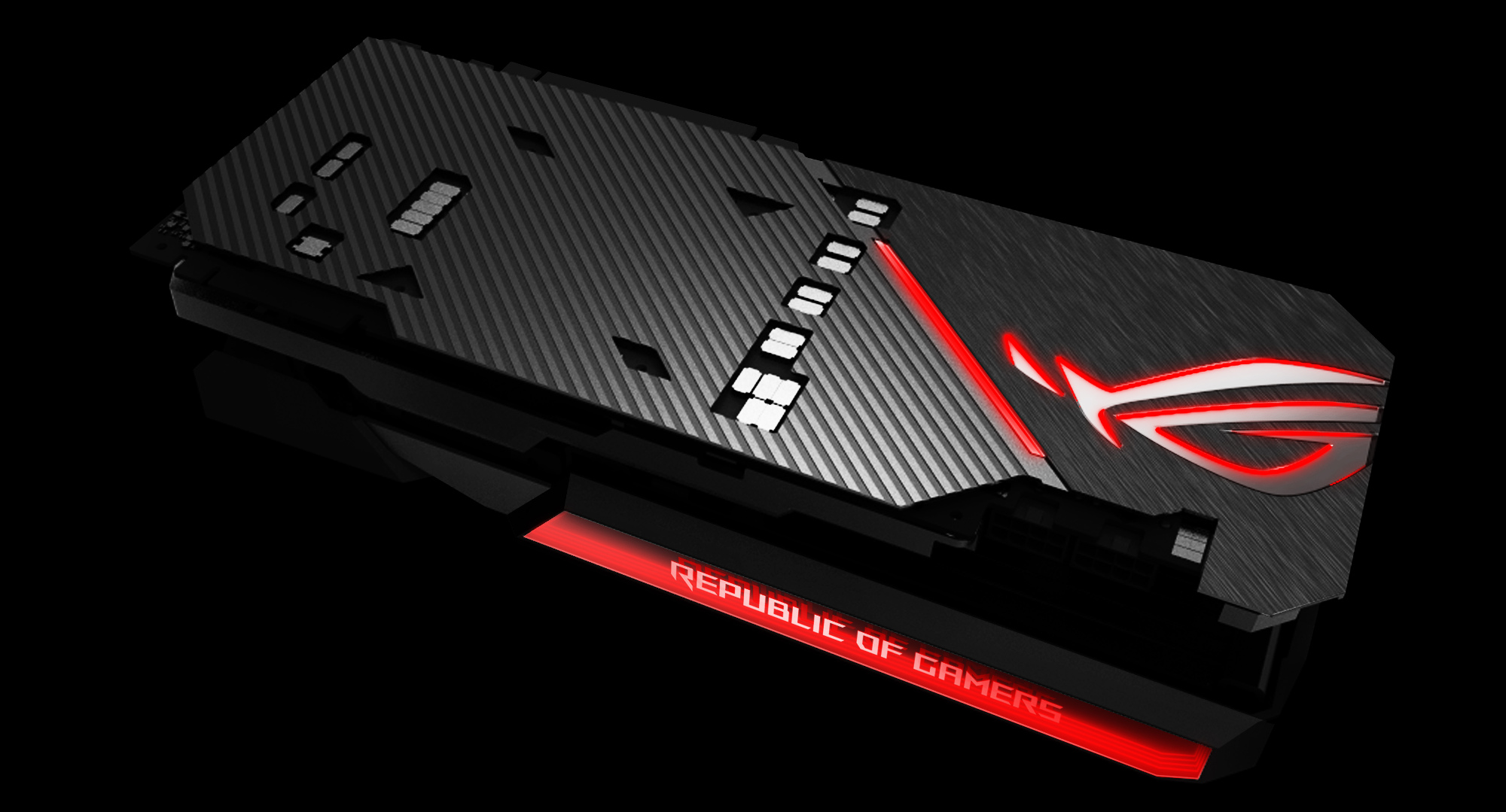
The GeForce RTX 2080 Ti is already a beast at stock speeds. Based on the new Turning architecture, it mixes traditional CUDA cores for programmable shading with new RT cores for ray tracing and Tensor cores for AI-accelerated processing. These cores combine to enable more advanced lighting, shadows, and reflections in real time, and they’re already being used to increase visual fidelity in games like Battlefield V.
In OC mode, the Matrix pushes the chip’s GPU Boost clock to 1815MHz, an increase of 150MHz over the Strix. The speed of its accompanying 11GB of GDDR6 graphics memory is higher as well, at 14.8 GT/s compared to 14 GT/s for the air-cooled alternative. These upgrades come with a higher 300W TDP, but the cooler has no problem handling the additional heat. The Matrix RTX 2080 Ti runs 7°C cooler than the Strix at the same noise and power level, despite offering better performance.
Accessorizing with Aura Sync and extra features
While integrated liquid cooling makes the Matrix stand out, the aesthetics are designed to blend in. The shroud uses the same materials and NCVM coating as similar pieces adorning ROG motherboards like the ROG Maximus XI Formula. Aura Sync adds customizable RGB lighting that’s easy to coordinate with compatible components, so you can quickly match colors and effects with the rest of your rig. You can activate stealth mode with the touch of a button, instantly deactivating all of the card’s integrated LEDs for a different look.

To prevent GPU sag from ruining your carefully composed build, the card is bolstered by a reinforcing frame that resists torsional twisting and lateral bending. This structural frame was designed to support the weight of the Strix, which is actually heavier than the Matrix, so it’s more than sufficient for the liquid-cooled card. The fact that the Matrix is both cooler and lighter than the Strix is a testament to the efficiency of its liquid cooler.
Sharing a foundation with the Strix bestows the Matrix with extra perks like a dual BIOS switch that lets you toggle between performance and quiet modes with different fan profiles. In quiet mode, the 0dB fans only turn on when needed, making the card nearly silent with lighter loads. The fan control intelligence can also be used to control auxiliary fans plugged into the dual FanConnect II headers on the card. These fans can respond to gaming loads that heat up the GPU, heavy processing that hits the CPU, or whichever of those two chips is the hottest at any given moment. Fan profiles can be adjusted with GPU Tweak II, which contains a full suite of advanced tuning options that includes control over clocks, voltages, and more.
Around back, the I/O panel is filled with the same collection of ports as the Strix. Pairs of HDMI 2.0b and DisplayPort 1.4 outputs cover your bases for gaming monitors and big-screen TVs. They’re joined by a Type-C port that supports the new VirtualLink standard for next-gen VR headsets. VirtualLink consolidates four DisplayPort lanes with USB 3.1 Gen 2 and 27W of power delivery in a single cable poised to simplify future VR connectivity.
Enter the Matrix next month
The Matrix RTX 2080 Ti is the latest in a long line of ROG graphics cards that push the boundaries of cutting-edge GPUs. It combines the performance of liquid cooling with the convenience of an all-in-one solution and the simplicity of a triple-slot design. Add sorted GPUs with substantially higher clocks, plus the usual features available on the latest ROG graphics cards, and the Matrix is the most advanced GeForce RTX 2080 Ti to date.
See the ROG Matrix GeForce RTX 2080 Ti in action at CES 2019 in Las Vegas, Nevada, from January 7~10. The first shipments are scheduled for February. Ask your local ROG representative for details about pricing and availability in your region.
ROG announced tons of new tech at CES. Check out this article to see all of our announcements in one place.
Author
Popular Posts
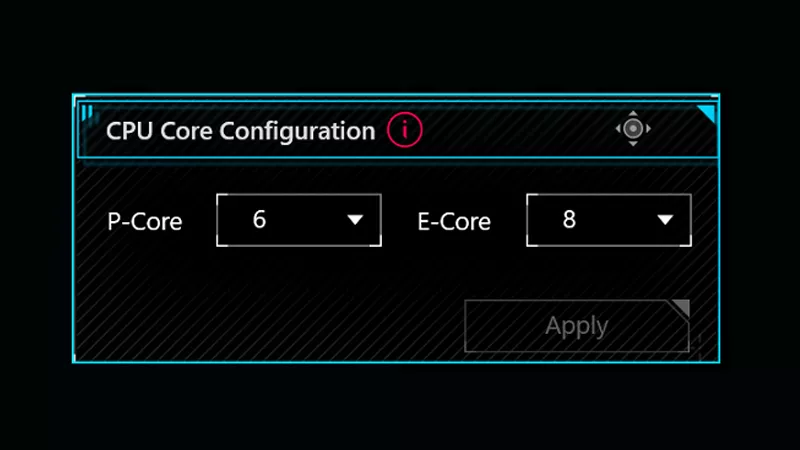
How to adjust your laptop's P-Cores and E-Cores for better performance and battery life
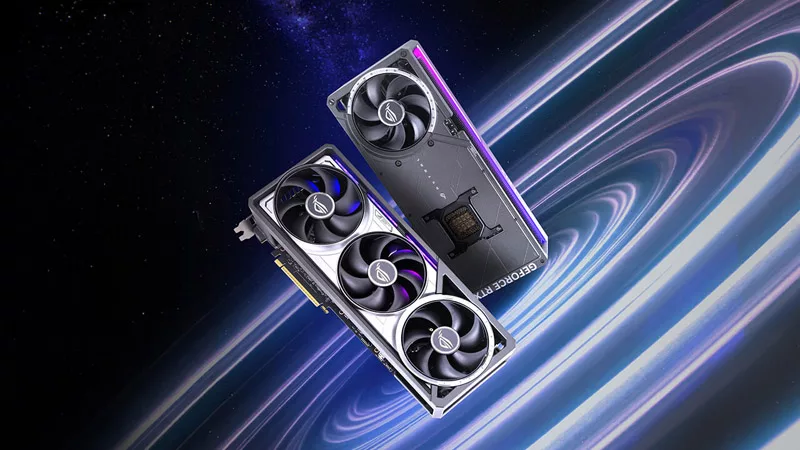
Introducing the ROG Astral GeForce RTX 5090 and 5080: a new frontier of gaming graphics

How to Cleanly Uninstall and Reinstall Armoury Crate
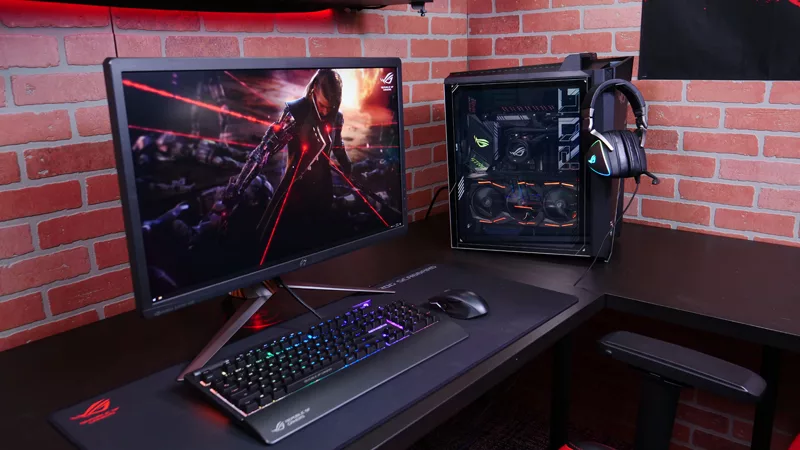
How to configure your PC's RGB lighting with Aura Sync
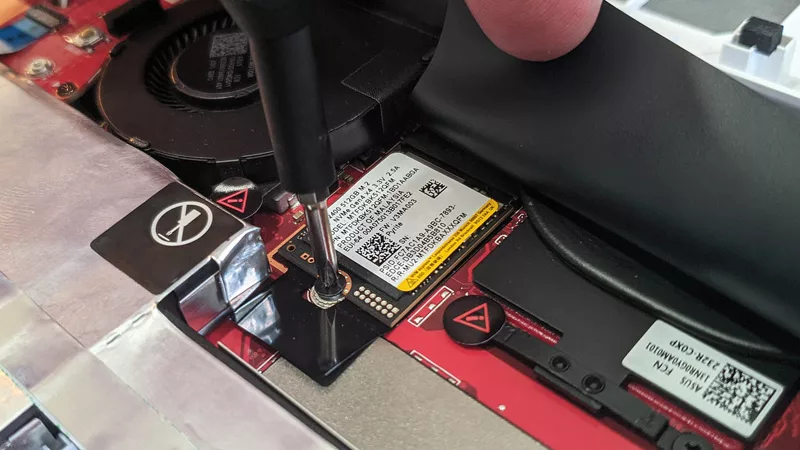
How to upgrade the SSD and reinstall Windows on your ROG Ally or Ally X
LATEST ARTICLES

Rizz up your rig with the golden ROG Astral GeForce RTX 5080 Dhahab CORE OC Edition
ROG Astral graphics cards are built to take style and performance to new frontiers. The ROG Astral GeForce RTX 5080 Dhahab CORE OC Edition is no exception.
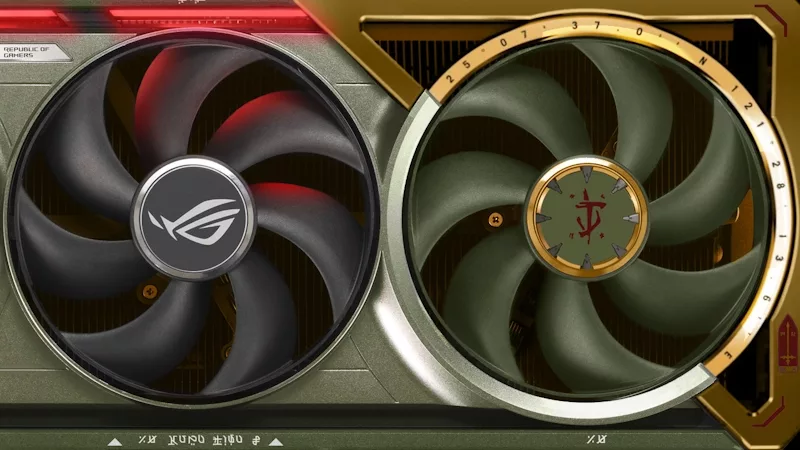
ROG and DOOM: The Dark Ages collide in the ROG Astral GeForce RTX 5080 OC DOOM Edition graphics card
Bold gaming performance meets the iconic style of the DOOM Slayer in the form of one unconquerable graphics card.
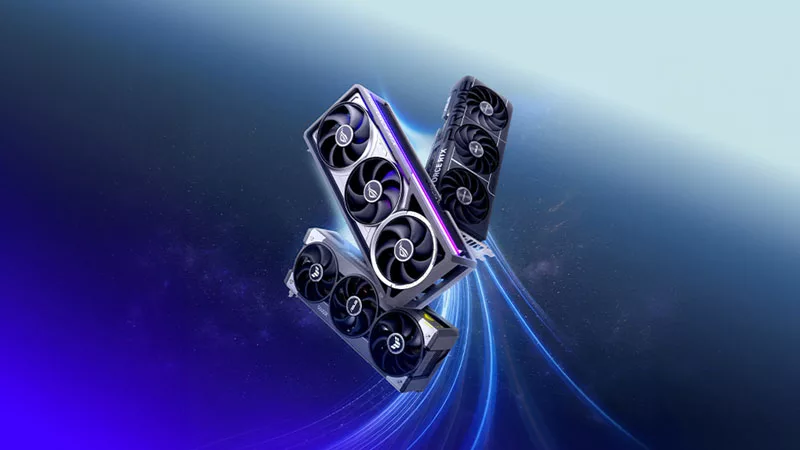
ROG Astral vs Strix vs TUF vs Prime: which ASUS graphics card is right for you?
When you go to buy a new graphics card, you might have an idea of which GPU you want, but picking a model is tougher. ASUS and ROG offer a number of variants to provide options that fit your build (and budget) best.

Introducing the ROG Astral GeForce RTX 5090 and 5080: a new frontier of gaming graphics
The NVIDIA GeForce RTX 50 series of GPUs has landed, and to usher in this new generation of graphics performance, we’re launching a new line of graphics cards.
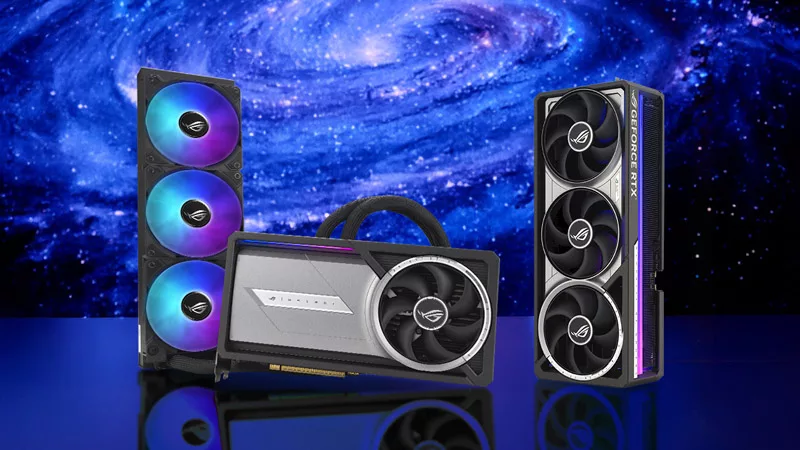
Air vs Liquid Cooling for the RTX 5090: Are AIO GPUs better?
The latest NVIDIA GeForce RTX 5090 is an incredible GPU, no doubt. But is a liquid-cooled RTX 5090 worth stepping up to over an air-cooled RTX 5090?
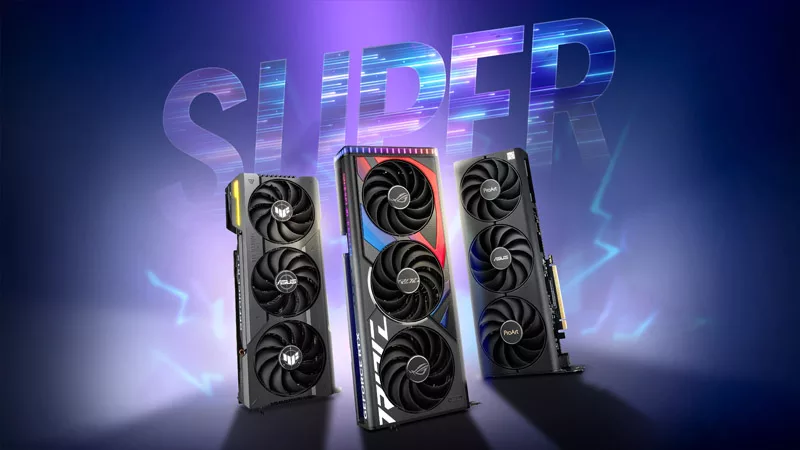
New GeForce RTX™ 40 SUPER series graphics cards boost performance from ROG and TUF Gaming
Discover the new RTX™ 40 SUPER Series from ROG & TUF Gaming, featuring top-tier performance, sleek designs, and the best power supplies.
